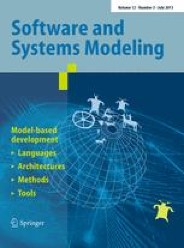Publikationen

Mit unseren Publikationen decken wir die unterschiedlichsten Forschungsbereiche ab, die sich im Feld von Mensch, Aufgabe und Technik ergeben. Neben traditionellen Themen der Wirtschaftsinformatik wie Wissensmanagement und Geschäftsprozessmanagement, finden Sie dabei auch Beiträge zu aktuellen Themen wie Blended Learning, Cloud Computing oder Smart Grids. Nutzen Sie diesen Überblick, um sich einen Eindruck über die Bandbreite und Möglichkeiten der Forschung der Wirtschaftsinformatik am Standort Essen zu verschaffen.

Art der Publikation: Beitrag in Zeitschrift
Multi-level modeling: cornerstones of a rationale
- Autor(en):
- Frank, Ulrich
- Titel der Zeitschrift:
- Software & Systems Modeling
- Veröffentlichung:
- 2022
- Heftnummer:
- 21
- Seiten:
- 451-480
- Digital Object Identifier (DOI):
- doi:10.1007/s10270-021-00955-1
- Link zum Volltext:
- https://link.springer.com/article/10.1007/s10270-021-00955-1
- Zitation:
- Download BibTeX
Kurzfassung
This expert voice paper presents a comprehensive rationale ofmulti-levelmodeling. It aims not only at a systematic assessment of its prospects, but also at encouraging applications of multi-level modeling in business information systems and at providing a motivation for future research. The assessment is developed from a comparison of multi-levelmodelingwith object-oriented, general-purpose modeling languages (GPMLs) and domain-specific modeling languages (DSMLs). To foster a differentiated evaluation, we propose a multi-perspective framework that accounts, among others, for essential design conflicts, different types of users, as well as economic aspects. Besides the assessment of the additional abstraction offered by multi-level modeling, the evaluation also identifies specific drawbacks and remaining challenges. Based on the results of the comparative assessment, in order to foster the adoption and further development of multi-level modeling, we discuss the prospects of supplementing multi-level modeling languages with multi-level programming languages and suggest possible dissemination strategies customized for different groups of users. The paper concludes with an outline of future research.
